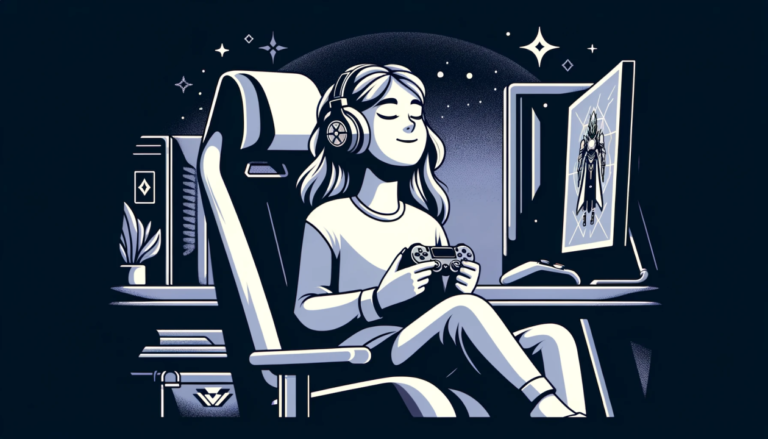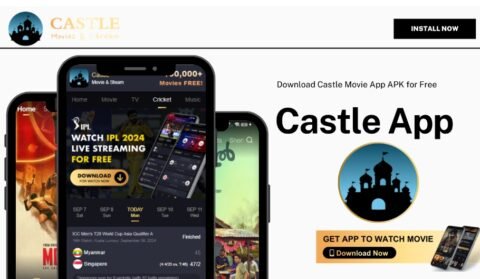In recent years, the game industry has experienced remarkable growth, pushing the boundaries of creativity and technology. Yet, one essential aspect is often overlooked – accessibility. Accessibility in-game art isn’t just about meeting legal requirements or following guidelines; it’s about creating an inclusive experience for all players, regardless of their abilities. Designing games with accessibility in mind opens up a world of possibilities for gamers and enhances the experience for everyone.
In this article, we’ll delve into how game art agencies can play a pivotal role in shaping accessible gaming environments. We’ll explore the key principles of accessible design, common challenges in-game art, and innovative solutions that are helping to make games more inclusive.
Why Accessibility in Game Art Matters
Accessibility in game design is more than a moral responsibility; it’s also good business. According to the World Health Organization, approximately 15% of the global population lives with some form of disability. For game developers and publishers, that’s a significant portion of the market that should not be excluded from enjoying video games.
When games are designed without consideration for disabilities, many players are left out, limiting the reach and potential success of a game. This is where the game art agency steps in, offering expertise to ensure that the visual and interactive elements of the game are accessible to all.
Principles of Accessible Game Art Design
Creating accessible game art begins with understanding the diverse needs of the player base. Below are some core principles to consider:
1. Clarity and Simplicity
Game art should be clear, easy to understand, and intuitive. Overly complicated designs can be a barrier, particularly for players with cognitive disabilities. Simple and clear icons, menus, and interfaces help all players interact with the game seamlessly.
2. Contrast and Color Blindness Support
Color contrast is crucial for players with visual impairments, including color blindness. Providing high contrast between backgrounds and essential game elements ensures that players can distinguish important visuals, such as menus, health bars, or critical in-game objects.
3. Font Size and Legibility
In-game text should be easy to read, especially for players with visual impairments. Font size should be adjustable, and fonts should be chosen for legibility rather than artistic flair. Clear, sans-serif fonts are generally more readable on different screen sizes.
4. Customizable UI
An adaptable user interface (UI) allows players to customize their gaming experience based on their specific needs. For example, enabling players to rearrange UI elements or adjust their size can significantly enhance accessibility.
5. Visual Feedback and Indicators
For players with hearing impairments, visual feedback such as flashing lights or vibrations can replace audio cues. Many games now offer subtitles and visual cues for sounds like footsteps or enemy proximity, making the game experience richer for players with hearing disabilities.
Challenges in Implementing Accessibility in Game Art
Although accessibility of in-game art is a growing priority, implementing it can be challenging. Here are some of the main obstacles that game developers and game art agencies face:
1. Balancing Aesthetics with Functionality
One of the primary challenges is finding a balance between making a game visually appealing and ensuring that it remains accessible. Some artistic choices, like low contrast or intricate designs, can make a game more difficult to navigate for players with disabilities.
2. Limited Industry Standards
While there are guidelines like the Web Content Accessibility Guidelines (WCAG) and Section 508 standards in the U.S., the gaming industry lacks universal accessibility standards. This makes it difficult for developers and artists to know exactly what to implement, leading to inconsistency across games.
3. Time and Budget Constraints
Many developers view accessibility as an added feature that requires extra resources. Time and budget constraints may push accessibility features to the back burner during development. However, by integrating accessibility from the start, these issues can often be minimized or avoided altogether.
4. Player Feedback
Many games fail to include accessible features simply because developers don’t receive enough feedback from players with disabilities. Active engagement with this community is essential to understand the challenges they face and how game art can help overcome them.
Innovative Solutions in Game Art for Accessibility
While the challenges are real, many exciting innovations in game art are improving accessibility. Here are some inspiring examples:
1. Colorblind Modes
Some games now feature colorblind modes, allowing players to choose from different palettes that work for their specific form of color blindness. This simple option can make a significant difference in a player’s ability to enjoy a game.
2. Subtitles and Closed Captioning
While subtitles have become standard, some games are going a step further by including closed captioning for sound effects, music cues, and other auditory elements that help players with hearing impairments fully experience the game.
3. Haptic Feedback
Many games now incorporate haptic feedback, allowing players to “feel” the game through vibrations. This tactile feedback can provide essential gameplay cues for players who may not be able to see or hear certain in-game elements.
4. Accessible Character Design
Another innovation is designing more inclusive characters. This includes offering characters with disabilities or customizable avatars that reflect diverse body types, races, and abilities.
5. UI Scaling
Several games now allow users to scale their UI. This helps make games more accessible for people with visual impairments, enabling them to make the text and icons larger without compromising the overall design of the game.
The Role of Game Art Agencies in Promoting Accessibility
Game art agencies have a crucial role in making games more accessible. By working closely with game developers, these agencies can ensure that art, design, and visual elements adhere to accessibility principles. This collaboration helps bring accessibility to the forefront of game development, rather than treating it as an afterthought.
Agencies specializing in game art bring expertise that enables developers to create visually stunning games that are also inclusive. With a comprehensive understanding of visual design principles and accessibility standards, these agencies can ensure that games not only look amazing but are also playable by as many people as possible.
FAQs about Accessibility in Game Art
Why is accessibility important in-game art?
Accessibility ensures that all players, regardless of their abilities, can fully enjoy a game. It promotes inclusivity, expands the potential player base, and enhances the overall gaming experience.
What are common accessibility features in-game art?
Common features include colorblind modes, adjustable font sizes, scalable user interfaces, closed captioning, and high-contrast visuals. These features help ensure that players with various disabilities can interact with the game effectively.
How can game art agencies help improve accessibility?
Game art agencies can work with developers to design accessible visual elements from the start, ensuring that games are inclusive while still being visually appealing. They can also provide guidance on implementing industry best practices for accessibility.
Is there a standard for accessibility in games?
Currently, there is no universal standard for accessibility in video games. However, many developers follow guidelines from organizations like the International Game Developers Association (IGDA) and the Game Accessibility Guidelines, which offer best practices for inclusive game design.
Conclusion: Designing for All Players
Creating accessible game art is no longer optional it’s essential for the future of gaming. By embracing inclusive design, developers can create a more welcoming environment for all players, regardless of their physical or cognitive abilities. A game art agency can play a pivotal role in ensuring that visual elements not only meet artistic standards but also provide the highest level of accessibility.
As the gaming industry continues to evolve, developers and artists must work together to design games that everyone can enjoy. From colorblind modes to scalable UIs, accessible game art is a vital part of creating inclusive, engaging, and immersive experiences for all.
Let’s make sure the future of gaming is a space where everyone can play.
Passionate content writer and savvy blog publisher, Aamir crafts compelling stories and insightful articles that captivate and inform. With a knack for blending creativity and strategy, they bring fresh perspectives to every piece. Dive into their world of words and discover content that resonates.





